
CULINARY INFO
Food
"DISCLAIMER"
The information contained here is supplied for your interest only and further research may be required.
I have gathered it from many sources over many years. While I attempt to insure they are crossed referenced for accuracy,
I take no responsibility for mistakes - additions or corrections are welcomed.

Food
Below are photos of some of the most popular herbs. (this page will be updated as I access more photos and get the time)
What is a herb and what is a spice?
For culinary purposes:
*A herb is defined as: any leafy part of a plant that is used in cuisine for flavouring
*A spice is defined as: any other part of a plant that is used in cuisine for flavouring: bark, stem, shoot, root, nut, seed, rhizome etc
Background history of herbs
It was in about 2000 B.C. in Babylon that the first documented account of herbs appeared. It described tried and tested medicinal uses of herbs, and included reference to many herbs we still use today such as thyme and bay leaves.
For hundreds of years, spices were to the world economy what the dollar is today.
From the beginning of time herbs have been used for food, medicine, clothing, smoking, smelling, cleaning, and many other applications. Head to the supermarket, go to the spice section, and you have the opportunity to purchase a variety of herbs. But there are many more than what you would find there. And there are many more uses than adding flavour to your favourite recipe. Some can even be found in your backyard.
With no other method of keeping food other than salt, Europeans were anxious to obtain anything which helped to preserve food and made that which was past its best taste better.
How to use herbs
Should they be used sparingly so as not to over power the food, or can they be used liberally to enhance the foods?
Herbs to use generously
Chervil: Chives: Lemon Balm: Borage: Mints: Parsley: Salad Burnet: Sweet Cicely.
Herbs to use carefully
Bay: Dill: Lovage: Sweet Marjoram: Peppermint: Savoury: Tarragon.
Herbs to use sparingly
Basil: Fennel: Oregano: Rosemary: Sorrel: Sage: Thyme.
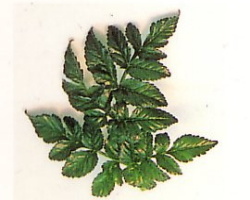
|
Angelica Angelica is available as two types: the ornemental variety with bright shiny leaves, used purely for presentation purposes and the edible variety. The latter is a biennial, and if kept cut and not allowed to flower it will last more than the usual two years and may be kept going for 3 -4 years or longer. All parts of the plant are aromatic and edible. Grown commercial for the bright green hollow stems which are candied and used in cakes and confectionery. The leaves are used for flavouring many liqueurs, in the preparation of bitters and with juniper berries to flavour gin. |
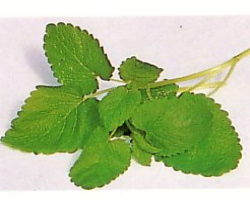
|
Balm Often also called lemon balm; its heart-shaped leaves have a strong lemon scent. For this reason it may be substituted for lemon rind in wine cups, stews, lamb and fish. Balm dries well. Fresh leaves chopped can be added to salads, omelettes and sauces, or flavour custards. |

|
Bayleaf Bayleaf has a pleasant aromatic flavour but needs to be used carefully because it is strong. Used in the classical bouquet garni. It improves stews, stocks, sauces, curries, marinades and often placed on kebabs.. It can be used in sweet custards also. Also known as laurel; which was used by the ancient Romans to form thier crowns. |

|
Basil There are two types, bush and sweet the latter being considered the best of the two. Renown for its use in Italian cuine, basil has a particular affinity with tomatoes, but it also goes well with peppers, aubergines, marrows and courgettes. Also goes well with oily fish. |

|
Borage Both the flowers and leaves of borage can be used in food and tastes faintly of cucumber. The herb wilts quickly, so to use it you have to grow it. Chop the leaves into soup, soft cheese or yoghurt. Dip whole leaves in batter and deep fry them. Float the blue flowers on cider or claret cups etc |

|
Caraway This is a biennial plant which grown to a height of about 2 ft and has finely cut fern-like leaves and small white flowers in umbels. The green leaves can be used for flavouring as a green herb having a less pronounced flavour than the seeds. Caraway seeds have a distinctive anise-like flavour which some people dislike. Where caraway grows wild and is plentiful, the roots are used as a vegetable. |
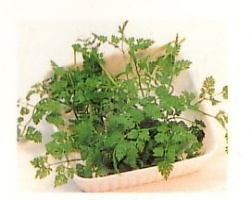
|
Chervil A delicate, anise-tasting herb, is one of the components of a classic "fines herbs' mixture with equal quantities of parsley, tarragon and chives. The taste is similar to parsley but slightly more peppery. Chervil is very good with eggs and delicate fish, chicken and vegetable dishes. |
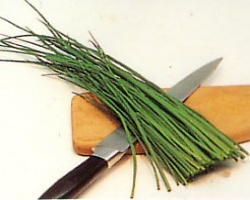
|
Chives Have a delicate onion flavour and can be used lavishly. Chives are excellent with egg and cheese, added to green and tomato salads. Sprinkled over mayonnaise and any pale dish for extra colour or used whole for garnish. |
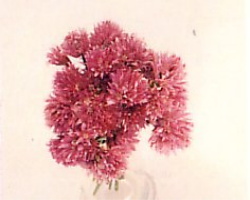
|
Chive flowers :-) |
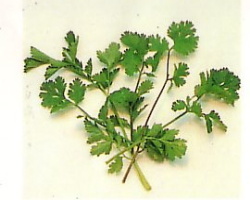
|
Coriander Both the seeds and leaves of Coriander are used; the seeds have a burnt orange flavour when crushed. The leaves have a milder, parsley like flavour and are used in many cuisines: Italian, Thai and many Asian cuisines. Also wonderful when stirred into soft cheeses. |
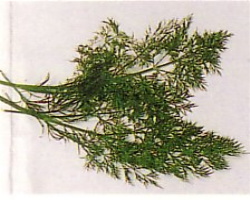
|
Dill Has a sweet, pungent flavour like caraway. Used in salads in particular cucumber. Add to a white sauce (Bechamel) or Hollandaise to served with fish. Dill is used a lot with gherkins for pickling and for gravlax - the Scandinavian method of curing salmon. Blends well with tomatoes, beans and peas. |
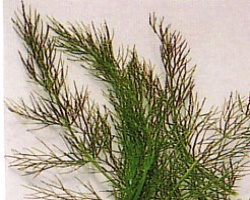
|
Fennel Like dill, fennel has feathery leaves but grows taller, It has a pleasant anise, smoky flavour. Counteracts the oiliness of fish. Also good in salads. Add the dried stalks to fish soups, chowders etc. |

|
Fennel - bronze :-) |
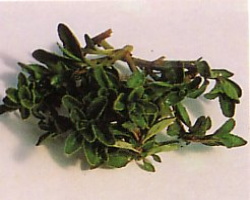
|
Marjoram :-) |

|
Mint There are many types of mints: Peppermint, Spearmint, Vietnemese mint, Apple mint etc. Chop over salads, add to cabbage during saute. Add sprigs to fruit and vegetable juices. Also used in the traditional way - peas, new potatoes, lamb etc. |

|
Mint - apple :-) |

|
Mint - Vietnemese :-) |
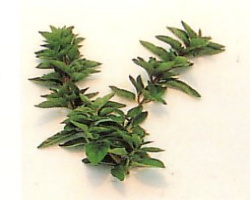
|
Oregano Is the wild variety of marjoram and tastes similar but stronger. Used extensively in Italian cuisine, it goes well in pasta, pizzas, rich dishes, moussaka and makes rich spicy casseroles. Sprinkle it over pork, ham or fish before grilling. Adds a lift to tomato or coleslaw salads. |
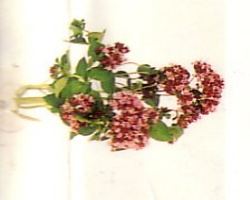
|
Oregano :-) |

|
Parsley - curly Has a refreshing flavour and colour. Invaluable herb and is the highest in vitamins. The stem rather than the leaf has the strongest flavour. Use in stews, soups and stocks. Chop the leaves generously into sauces, stuffing and salads. Use fresh or deep fried as garnish. |
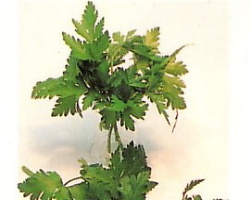
|
Parsley - Italian :-) |
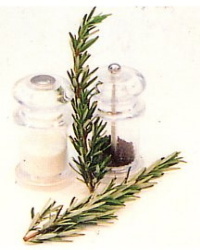
|
Rosemary Is delicious, pungent and slightly pine flavoured, but it is strong and needs discretion. Rosemary is excellent with lamb, chicken, soups and casseroles. Gives a lift when sprinkled over pasta, tomatoes, cauliflower and hot haricot or butter beans. |
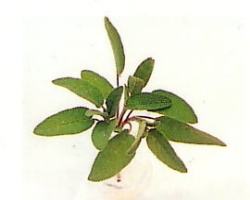
|
Sage Is one of the strongest herbs. It helps to counteract richness, so is good with pork, goose, duck, oily fish and dairy products. Add chopped sage to cream cheese and Welsh Rarebit. It also gives flavour to pulses (dried peas/beans etc) |

|
Sage - pineapple :-) |

|
Sage - purple :-) |
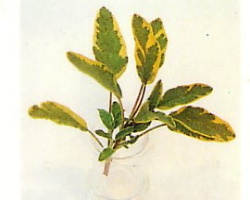
|
Sage - variagated :-) |

|
Savory There are two varieties, summer and winter. Both have a rather strong peppery flavour, but summer savoury is milder. Sometimes known as bean herb, as it goes well with broad bean and pulses and is also a classic flavouring for trout. Sprinkle over beetroot salad, good in omelets, stuffed eggs and in poultry stuffings. |
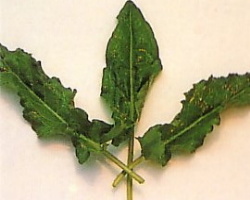
|
Sorrel Has a sharp, rather sour flavour that is good in a green salad or chopped into omelets. It can be cooked like spinach, but should be used sparingly and is better in combinations. Makes good puree (green) to serve wit fish or in a quiche. It may also be used for stuffing fish. Sorrel makes an excellent puree soup. |
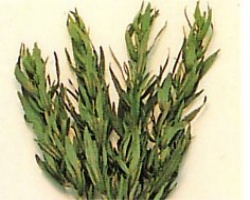
|
Tarragon There are two main types - French and Russian. Russian being lighter in flavour. French tarragon is perhaps the king among herbs, essential to many classic French dishes. It tastes faintly of anise and is essential for sauce Bearnaise. Lifts chicken, green salads, baked eggs and omelettes. |

|
Thyme Is part of the classic bouquet garni (with parsley and bay). Use it to flavour casseroles and stuffing’s or add it to cheese sauces. Good for rabbit and belly pork casseroles. Lemon Thyme is good in fruit salads and custards. |
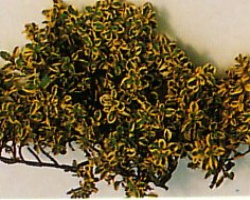
|
Thyme - lemon :-) |

|
Thyme - pizza :-) |
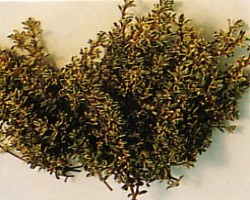
|
Thyme - silver :-) |
